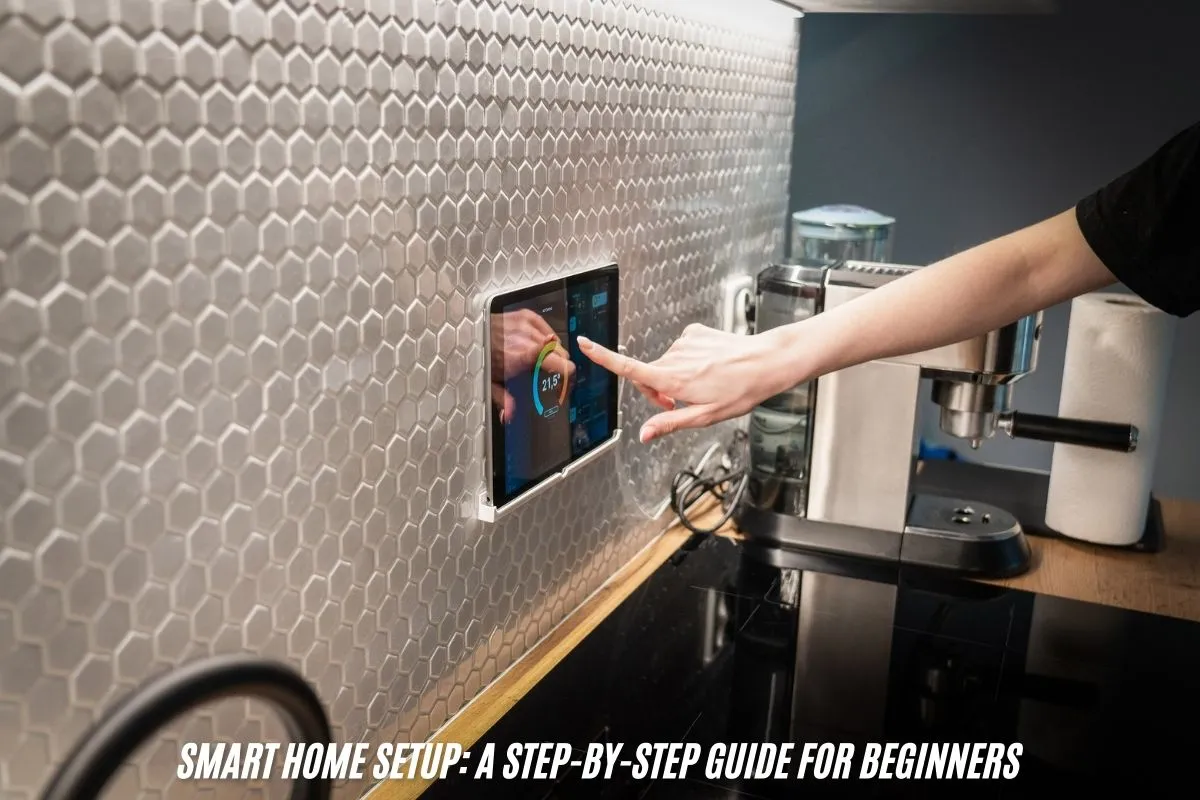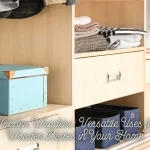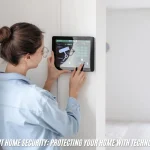Setting up a smart home is more than just installing the latest gadgets—it’s about enhancing how you live by making your environment more efficient, secure, and comfortable. In recent years, smart home technology has become increasingly popular, offering solutions that make everyday life easier and more connected. But where do you start? With so many options available, setting up a smart home can seem overwhelming. Don’t worry, though; it’s simpler than it looks!
This guide will walk you through creating your own smart home, share expert insights, and offer practical tips to ensure your setup is user-friendly and secure.
What is a Smart Home?
Before diving into the setup process, let’s define a smart home. Simply put, a smart home is a living space that uses internet-connected devices to enable remote management and automation of systems like lighting, heating, security, and entertainment. These devices can communicate with each other and be controlled via smartphones, voice assistants (like Alexa or Google Assistant), or even specialized apps.
Imagine adjusting the thermostat without getting out of bed or turning on your lights with a simple voice command—this is the magic of a smart home. The best part? You can start small and expand your smart home over time as you discover what works best.
Step 1: Assess Your Needs
Before you start buying smart devices, assessing what you need is essential. A common mistake people make is purchasing every smart gadget they come across, only to discover that they don’t use half of it. So, take a step back and consider how technology can improve your daily life.
For example, do you want a more innovative way to manage energy bills? Smart thermostats like Nest can help regulate your home’s temperature based on your habits, saving energy and reducing costs. Or maybe you’re interested in security—adding smart doorbells or cameras will allow you to monitor your home from anywhere.
Personal Tip: My Smart Home Journey
When I first started setting up my smart home, I began with simple devices like smart bulbs and a voice assistant. Initially, I didn’t need an entire ecosystem; I just wanted to make my daily routines easier. Over time, I added a smart thermostat and a security system, and the changes were immediately noticeable. More control over my environment made my home feel safer and more comfortable.
Step 2: Build a Strong Foundation with Wi-Fi
A reliable and strong Wi-Fi network is one of the most important aspects of any smart home setup. Most smart devices rely on Wi-Fi and your phone or voice assistant to communicate with each other. Without a strong network, your devices might malfunction, leading to frustration.
Bill Gates, co-founder of Microsoft, emphasizes the importance of a solid network:
“The foundation of any successful smart home is a strong and reliable Wi-Fi network.” — Bill Gates (Source: Microsoft)
Ensure that your Wi-Fi router can handle multiple devices at once. If you have a large home or live in an area with weak signals, consider investing in a mesh Wi-Fi system to extend coverage.
Step 3: Start with Essential Devices
When building a smart home, starting small and gradually expanding your ecosystem is best. There’s no need to buy everything at once. As Steve Wozniak, co-founder of Apple, suggests:
“Start small, think big. Begin with a few key devices and gradually expand your smart home ecosystem.” — Steve Wozniak (Source: Apple)
Here are a few key devices to consider for your smart home:
- Bright Lights: These are one of the easiest and most affordable upgrades. You can control them with your voice or smartphone and set schedules for when they should turn on or off.
- Smart Thermostat: A smart thermostat like the Nest Thermostat can learn your habits and adjust the temperature for comfort and energy savings.
- Smart Plugs: Smart plugs allow you to remotely control regular appliances, such as lamps or coffee makers.
- Voice Assistant: A device like Amazon Echo or Google Nest Hub will be the central hub for controlling other smart devices via voice commands.
Personal Tip: The Power of Smart Lighting
I started with bright lights, which completely changed how I felt in my home. I can dim the lights for movie nights or set them to turn on automatically when I arrive home. The best part? I can control everything from my phone while on the couch or out of town.
Step 4: Ensure Simplicity and Usability
When setting up your smart home, always prioritize user experience. A smart home should simplify your life, not make it more complicated. Jony Ive, former Chief Design Officer at Apple, emphasizes this philosophy:
“Prioritize user experience and prioritize simplicity. A smart home should enhance your life, not complicate it.” — Jony Ive (Source: Apple)
When selecting devices, consider ease of use. Some devices may offer advanced features, but they may not be worth the investment if they are hard to set up or operate. Choose products with intuitive apps and voice control options to make the experience more seamless.
Step 5: Focus on Security
Security becomes increasingly important as you add more connected devices to your home. Your devices can store personal data; if they’re not adequately secured, they could become vulnerable to cyberattacks. Bruce Schneier, a cryptographer and security expert, advises:
“Security is paramount in a connected home. Invest in robust security measures to protect your data and devices.” — Bruce Schneier (Source: Schneier on Security)
Here are some tips to improve security in your smart home:
- Use strong, unique passwords for all your devices and apps.
- Enable two-factor authentication (2FA) where possible.
- Keep software updated to patch vulnerabilities.
- Secure your Wi-Fi network with WPA3 encryption and a strong password.
Step 6: Automate and Set Routines
Consider adding automation to improve efficiency once your essential devices are set up. Many smart home systems allow you to create routines and schedules. For example, you can set your thermostat to adjust the temperature before you wake up or program your lights to turn on at sunset.
As an anonymous smart home enthusiast once said,
“Embrace the power of automation. Routines and schedules can significantly improve daily life and free up time.” — (Source: Smart Home Enthusiast Blog)
Automation is all about making your life easier. If you wake up at the same time every day, why not have your coffee maker start brewing automatically? Or, if you’re leaving for work, you could set your security system to arm itself and your lights to turn off with a single command.
Step 7: Expand Your Smart Home Ecosystem
As you get comfortable with your initial setup, you can expand your smart home. One exciting aspect of a smart home is its ability to integrate with other devices and platforms. According to Marc Andreessen, a well-known technology investor:
“The future of the smart home lies in seamless integration and interoperability between different devices and platforms” — Marc Andreessen (Source: The Verge)
You can add devices like:
- Smart Speakers: With a smart speaker, you can play music, control devices, and get answers to questions.
- Smart Security Cameras: Keep an eye on your home while away with devices like Ring or Arlo.
- Smart Locks: Unlock your doors remotely or set up keyless entry for guests.
As you expand, you’ll see how different devices can work together. For example, your smart thermostat might adjust based on location, and your security cameras might send alerts if they detect motion while you’re away.
Step 8: Stay Updated and Evolving
The world of smart homes is constantly evolving, with new technologies, devices, and integrations emerging constantly. To get the most out of your smart home, stay informed about new developments. Keep an eye on product updates, new apps, and even new protocols (such as Matter, a new standard for smart home devices that promises easier compatibility).
Personal Tip: Constant Learning
I love experimenting with new tech. Every few months, I check out new gadgets or device updates. Sometimes, a minor upgrade, like adding a new voice assistant or updating an app, can make all the difference in how my home functions.
Conclusion: Building Your Smart Home, One Step at a Time
Setting up a smart home doesn’t have to be complicated. Start with the basics, ensure your network is solid, and gradually expand your setup as you see fit. Remember to prioritize security, simplicity, and automation to get the most out of your devices. And most importantly, enjoy the process! Over time, you’ll find that the small changes add up, transforming your home into a more efficient, comfortable, and connected space.
By following these steps and heeding expert advice, you'll be well on your way to creating a smart home that works for you and enhances your everyday life.










